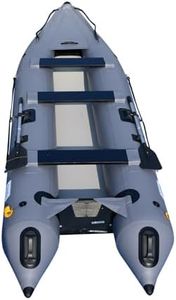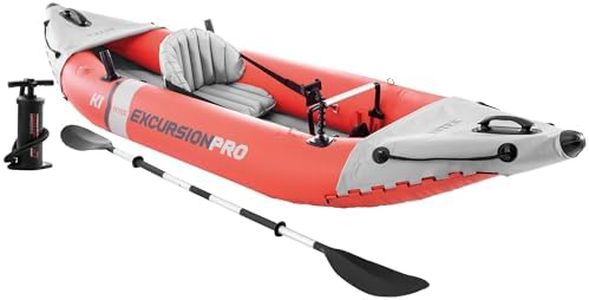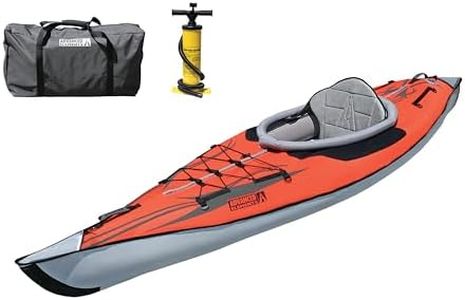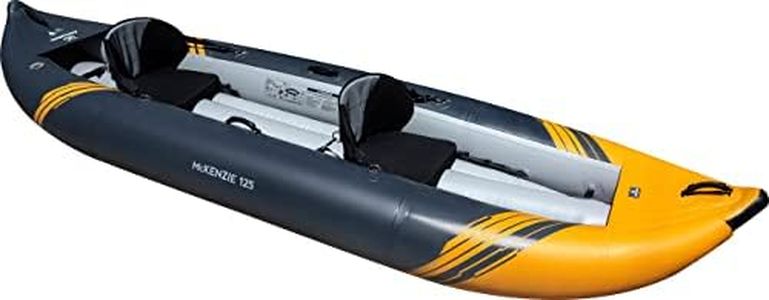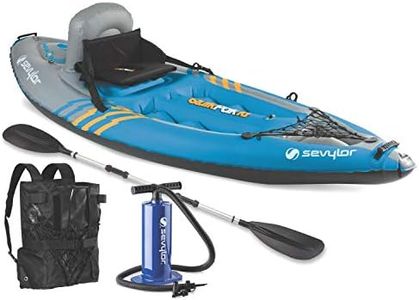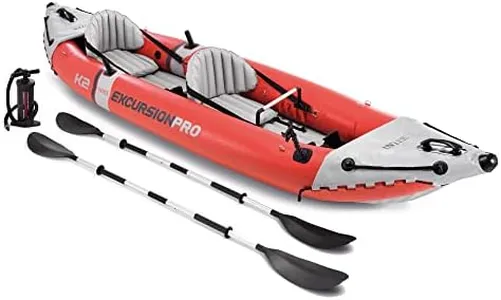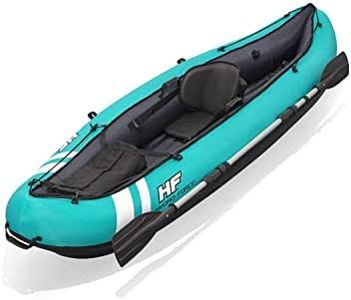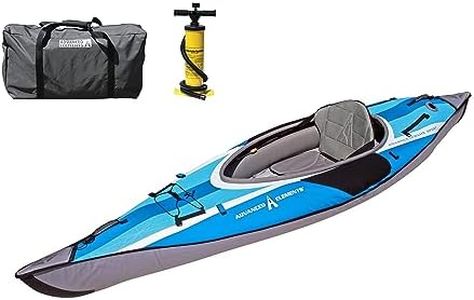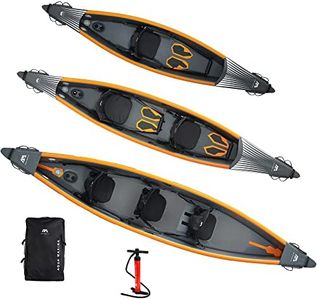We Use CookiesWe use cookies to enhance the security, performance,
functionality and for analytical and promotional activities. By continuing to browse this site you
are agreeing to our privacy policy
10 Best Cheap Kayak
From leading brands and best sellers available on the web.Buying Guide for the Best Cheap Kayak
Choosing a kayak can be a fun and rewarding process if you know what to look for and think clearly about your needs. Start by identifying where and how you plan to use the kayak—on lakes, rivers, or ocean, for recreation, fishing, or touring. Then, focus on the most important features, balancing performance, comfort, and durability to fit your personal style and expectations.Type (Sit-in vs. Sit-on-top)This refers to how you sit in the kayak. Sit-in kayaks have an enclosed seat, protecting your lower body from wind and splashes, and are a good choice for cooler climates or longer trips. Sit-on-top models are open, easier to get in and out of, and preferred for warmer weather or casual recreation. Think about your main activities, the water conditions you'll be in, and your comfort with getting wet—casual paddlers or beginners often prefer sit-on-top for their stability and ease.
LengthKayak length affects both speed and maneuverability. Short kayaks (around 8-10 feet) are easier to handle and better for beginners or small bodies of water, while longer kayaks (12 feet and up) track straighter and are more efficient over distance, ideal for touring or open water. If you plan to paddle mainly in small lakes or rivers and value easy storage and transport, go shorter. If performance or distance paddling matters more, look longer.
Width (Beam)The width influences stability and speed. Wider kayaks (over 30 inches) feel more stable and are forgiving for novices or those nervous about tipping, but they tend to be slower. Narrower kayaks offer better speed and efficiency, but can feel tippier. Pick a width based on your comfort level—choose wide for stability or narrower for performance, depending on whether you want relaxation or more athletic paddling.
Weight CapacityThis spec tells you how much weight (including yourself and your gear) the kayak can safely carry. Exceeding it can make the kayak unstable or unsafe. Make a rough estimate of your weight plus what you typically carry (like a cooler or fishing gear) and pick a kayak with sufficient capacity and some margin. This is especially important for heavier paddlers or those planning longer trips with cargo.
Hull MaterialKayaks come in materials like plastic, composite, or inflatable fabrics. Plastic (polyethylene) is most common for affordable kayaks—it's tough, low-maintenance, and able to handle bumps and scrapes, although it's heavier. Inflatable kayaks are lightweight and super portable, but may not be as sturdy or track as well. Consider how much durability, ease of transport, and storage matter for your lifestyle.
Weight of the KayakThe kayak's own weight affects how easy it is to carry, load onto a car, or move by yourself. Lighter kayaks are simpler to handle for solo paddlers or those with limited strength, but may cost more or feel less stable. Look for a weight that feels manageable, especially if you often paddle alone or need to transport it frequently.
